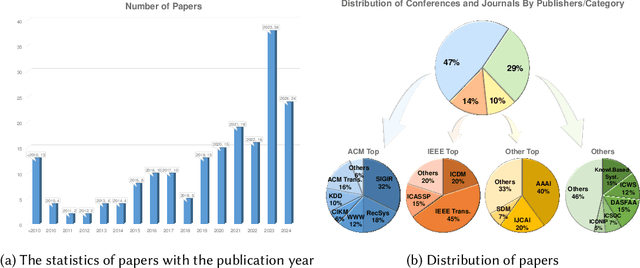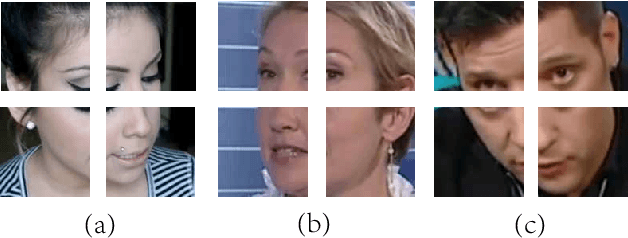Peipei Wang
A Survey on Bundle Recommendation: Methods, Applications, and Challenges
Nov 01, 2024



Abstract:In recent years, bundle recommendation systems have gained significant attention in both academia and industry due to their ability to enhance user experience and increase sales by recommending a set of items as a bundle rather than individual items. This survey provides a comprehensive review on bundle recommendation, beginning by a taxonomy for exploring product bundling. We classify it into two categories based on bundling strategy from various application domains, i.e., discriminative and generative bundle recommendation. Then we formulate the corresponding tasks of the two categories and systematically review their methods: 1) representation learning from bundle and item levels and interaction modeling for discriminative bundle recommendation; 2) representation learning from item level and bundle generation for generative bundle recommendation. Subsequently, we survey the resources of bundle recommendation including datasets and evaluation metrics, and conduct reproducibility experiments on mainstream models. Lastly, we discuss the main challenges and highlight the promising future directions in the field of bundle recommendation, aiming to serve as a useful resource for researchers and practitioners. Our code and datasets are publicly available at https://github.com/WUT-IDEA/bundle-recommendation-survey.
GGViT:Multistream Vision Transformer Network in Face2Face Facial Reenactment Detection
Oct 12, 2022



Abstract:Detecting manipulated facial images and videos on social networks has been an urgent problem to be solved. The compression of videos on social media has destroyed some pixel details that could be used to detect forgeries. Hence, it is crucial to detect manipulated faces in videos of different quality. We propose a new multi-stream network architecture named GGViT, which utilizes global information to improve the generalization of the model. The embedding of the whole face extracted by ViT will guide each stream network. Through a large number of experiments, we have proved that our proposed model achieves state-of-the-art classification accuracy on FF++ dataset, and has been greatly improved on scenarios of different compression rates. The accuracy of Raw/C23, Raw/C40 and C23/C40 was increased by 24.34%, 15.08% and 10.14% respectively.
 Add to Chrome
Add to Chrome Add to Firefox
Add to Firefox Add to Edge
Add to Edge